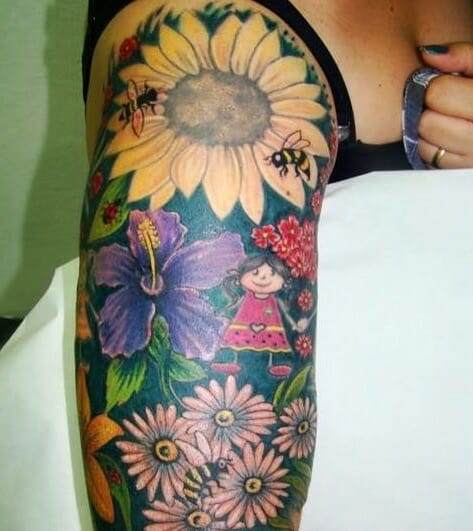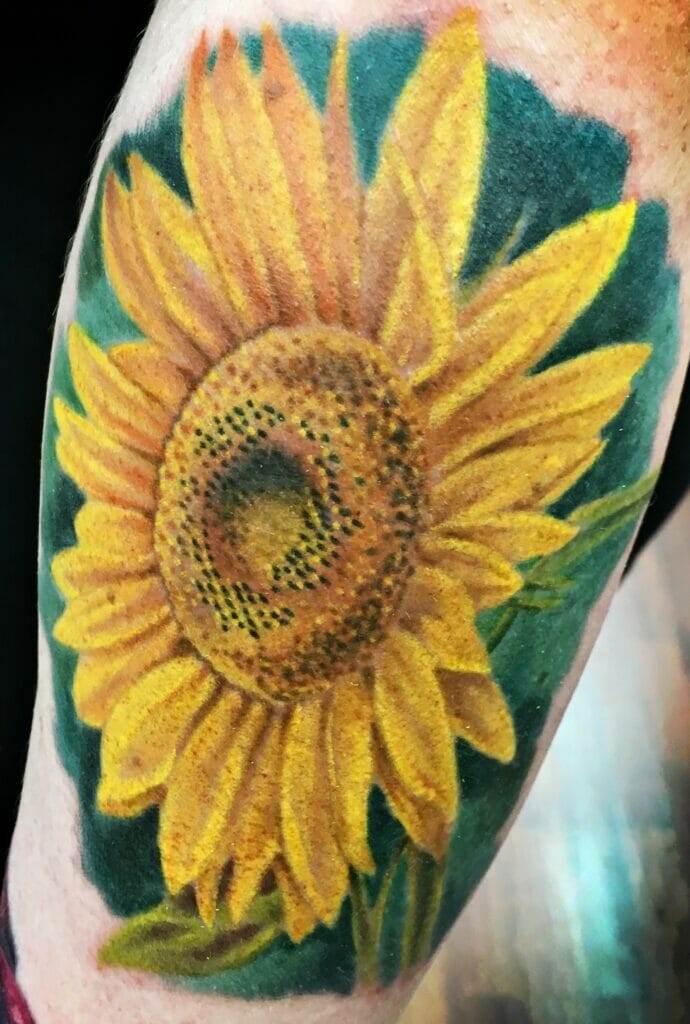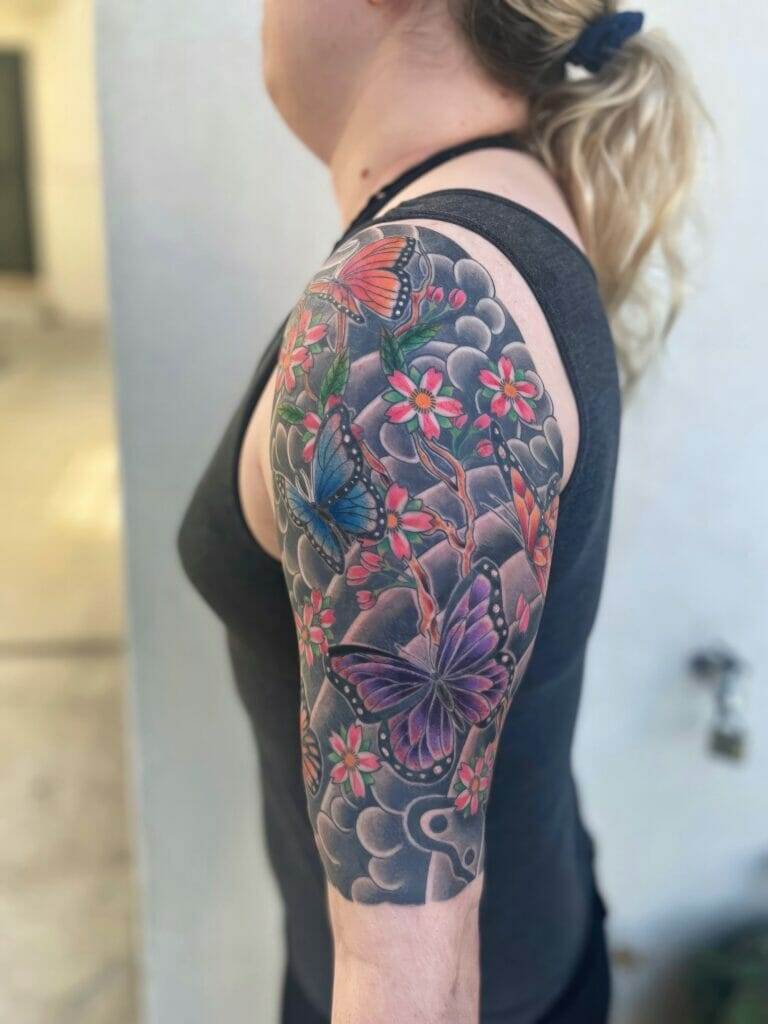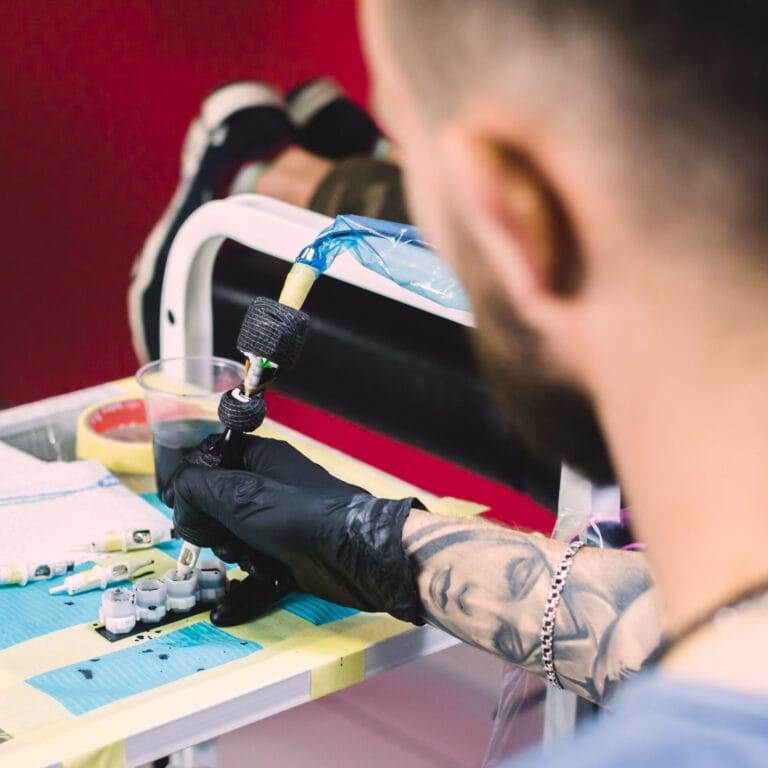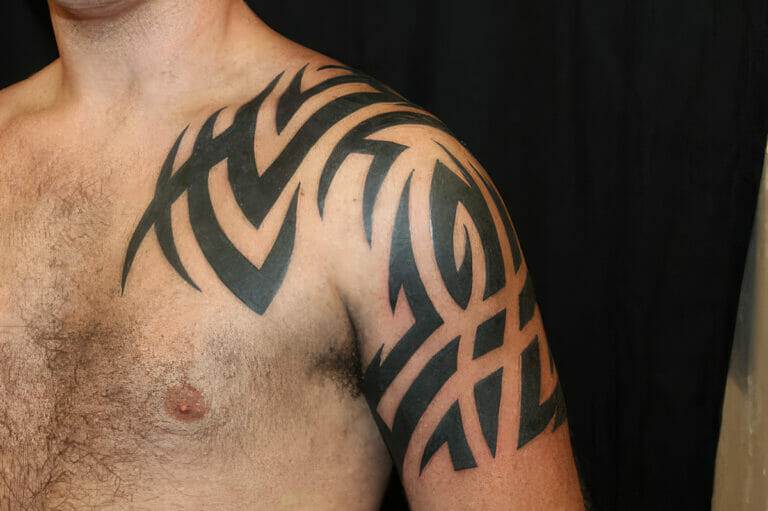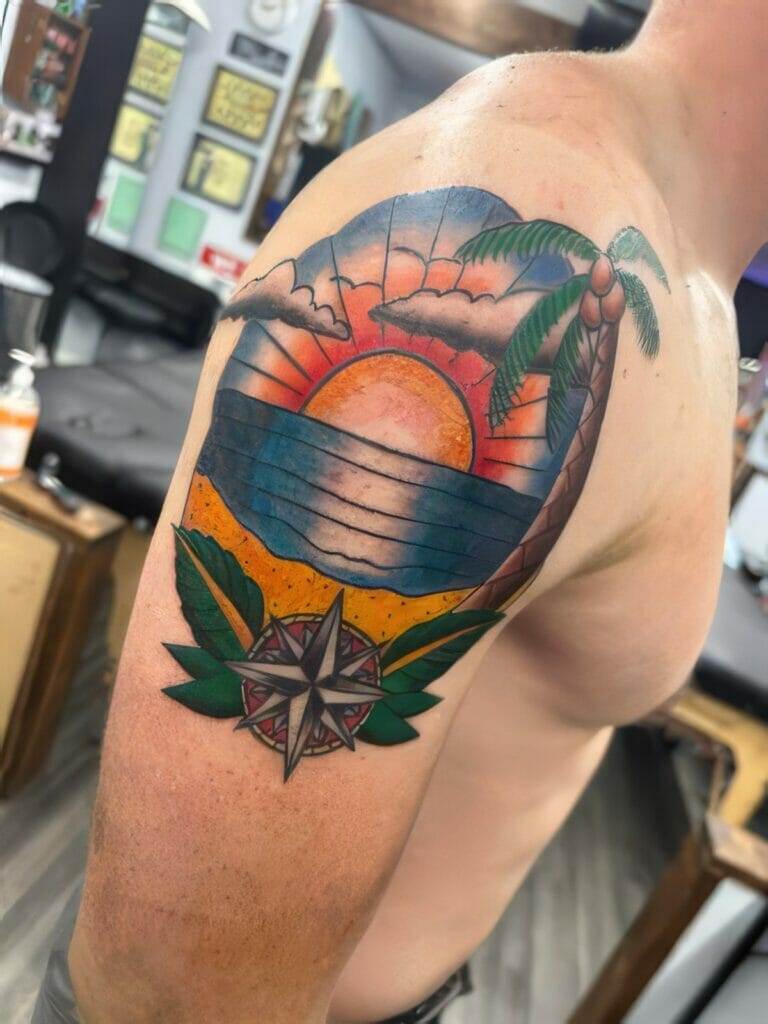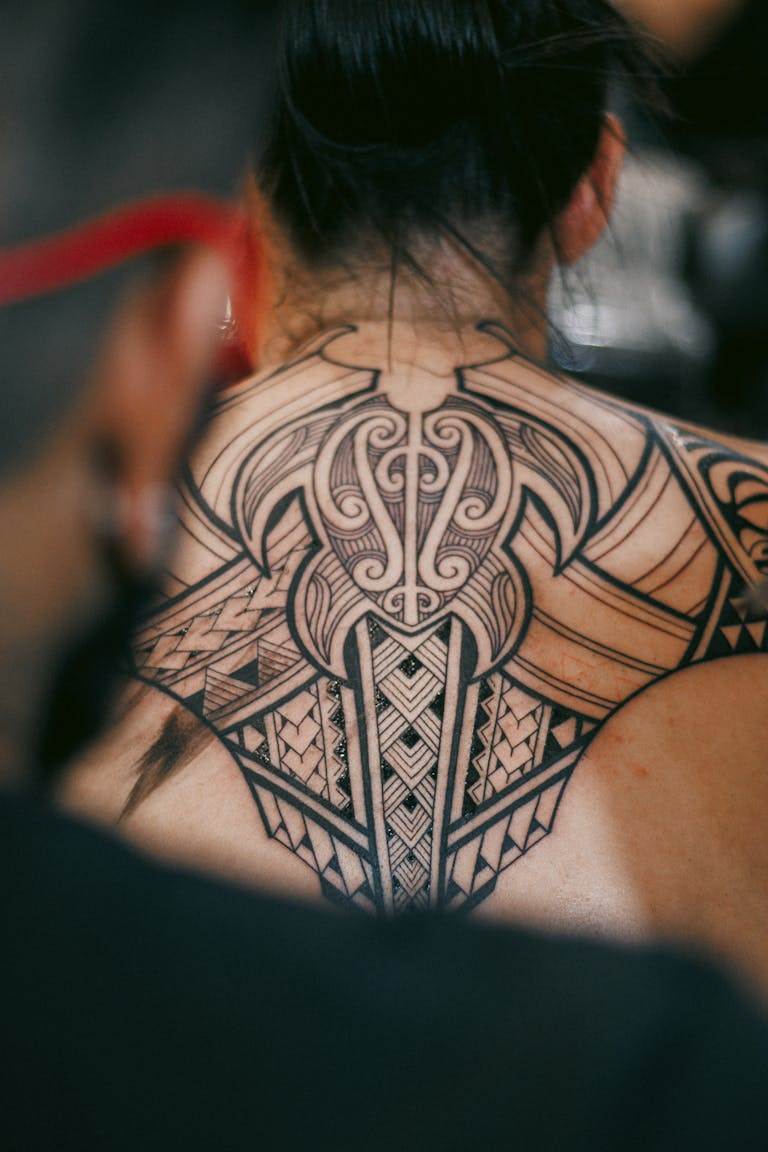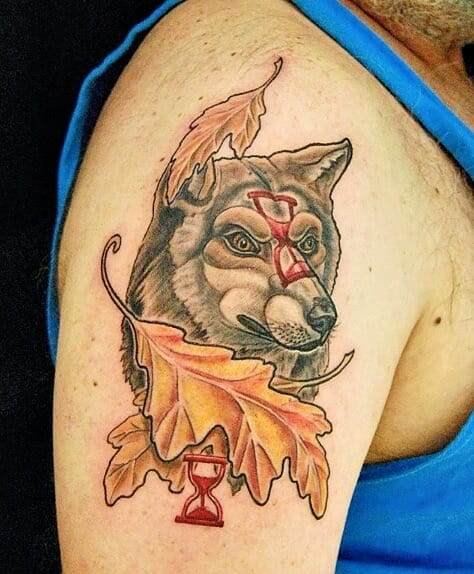
In recent years, watercolor tattoos have gained immense popularity in the world of body art. These unique and vibrant tattoos have captured the attention of tattoo enthusiasts and artists alike. Watercolor tattoos are characterized by their fluid and painterly appearance, mimicking the look of watercolor paintings. This trend has taken the tattoo industry by storm, with more and more people opting for this style of tattooing.
The rise in popularity of watercolor tattoos can be attributed to several factors. Firstly, people are increasingly looking for unique and personalized tattoo designs that stand out from the crowd. Watercolor tattoos offer a fresh and artistic approach to traditional tattooing, allowing individuals to express their creativity and individuality. Additionally, advancements in tattooing techniques and ink formulations have made it possible for artists to achieve stunning watercolor effects on the skin.
What is Watercolor Ink and How is it Different from Traditional Tattoo Ink?
Watercolor ink is a type of tattoo ink that is specifically formulated to create a watercolor effect on the skin. Unlike traditional tattoo ink, which is opaque and heavily pigmented, watercolor ink is translucent and allows the skin to show through. This gives watercolor tattoos their characteristic soft and ethereal appearance.
Traditional tattoo ink is made up of a combination of pigments, carrier fluids, and binding agents. The pigments used in traditional ink are opaque and dense, resulting in solid and bold colors on the skin. Watercolor ink, on the other hand, contains a higher concentration of carrier fluids and fewer pigments. This allows the ink to spread more easily on the skin, creating a watercolor-like effect.
The unique properties of watercolor ink allow tattoo artists to create stunning gradients, blends, and washes of color on the skin. The translucent nature of the ink also allows for layering and mixing of colors, resulting in a wide range of possibilities for creating intricate and detailed designs.
The Benefits of Choosing Watercolor Ink for Your Tattoo
There are several advantages to choosing watercolor ink for your tattoo. Firstly, watercolor tattoos have a softer and more delicate appearance compared to traditional tattoos. The translucent nature of the ink allows the skin to show through, giving the tattoo a more organic and natural look. This can be particularly appealing for those who prefer a more subtle and understated tattoo design.
Watercolor ink also offers a greater range of color options compared to traditional ink. The ability to layer and mix colors allows for endless possibilities in creating vibrant and dynamic designs. Artists can achieve beautiful gradients and blends, giving the tattoo a sense of depth and dimension.
Another benefit of watercolor ink is its ability to enhance the overall design of the tattoo. The fluid and painterly nature of watercolor tattoos can complement a wide range of subjects, from flowers and animals to landscapes and abstract designs. The soft edges and gentle transitions between colors can add a sense of movement and life to the tattoo, making it visually captivating.
Choosing the Right Design for a Watercolor Tattoo
When choosing a design for a watercolor tattoo, it’s important to consider how the design will work with the unique properties of watercolor ink. Designs that have a lot of intricate details or fine lines may not translate well with watercolor ink, as the fluid nature of the ink can cause the details to blur or bleed together.
Instead, opt for designs that have bold shapes and larger areas of color. This will allow the artist to create beautiful gradients and blends, showcasing the unique qualities of watercolor ink. Designs that are inspired by nature, such as flowers, birds, or landscapes, tend to work particularly well with watercolor tattoos.
It’s also important to consider the placement of your watercolor tattoo. Certain body parts may be better suited for watercolor tattoos than others. Areas with more skin and less movement, such as the upper arm, thigh, or back, tend to be ideal for watercolor tattoos. These areas provide a larger canvas for the artist to work with and allow the colors to blend and flow more naturally.
The Best Body Parts for Watercolor Tattoos
While watercolor tattoos can be done on any part of the body, certain areas are better suited for this style of tattooing. Areas with more skin and less movement tend to be ideal for watercolor tattoos, as they provide a larger canvas for the artist to work with.
The upper arm is a popular choice for watercolor tattoos, as it offers a large and relatively flat surface area. This allows the artist to create beautiful gradients and blends of color. The thigh is another great option, especially for larger and more intricate designs. The back is also a popular choice, as it provides ample space for larger and more detailed watercolor tattoos.
When choosing a location for your watercolor tattoo, consider how the design will flow with the natural contours of your body. Certain designs may work better on specific body parts, so it’s important to discuss your ideas with your tattoo artist and get their input on the placement.
The Healing Process for Watercolor Tattoos

The healing process for watercolor tattoos is similar to that of traditional tattoos. After getting a watercolor tattoo, it’s important to follow proper aftercare instructions to ensure proper healing and minimize the risk of infection.
During the first few days after getting a watercolor tattoo, it’s normal for the tattoo to be red, swollen, and tender. The tattoo may also ooze a clear or yellowish fluid, which is a normal part of the healing process. It’s important to keep the tattoo clean and dry during this time, avoiding excessive moisture or friction.
After a few days, the tattoo will start to scab and peel. It’s important not to pick or scratch at the scabs, as this can cause scarring or loss of color. Instead, gently wash the tattoo with mild soap and water and apply a thin layer of fragrance-free moisturizer to keep the skin hydrated.
It’s also important to avoid exposing the tattoo to direct sunlight or soaking it in water during the healing process. Sunlight can cause the colors to fade or change, while soaking can soften the scabs and increase the risk of infection.
The Longevity of Watercolor Tattoos: How to Keep Them Looking Fresh
Watercolor tattoos, like any other tattoos, require proper care and maintenance to ensure they last as long as possible. While watercolor tattoos may fade slightly over time, there are steps you can take to keep them looking vibrant and fresh.
One of the most important factors in maintaining the longevity of a watercolor tattoo is protecting it from excessive sun exposure. UV rays can cause the colors to fade or change over time, so it’s important to apply sunscreen with a high SPF to the tattoo whenever it will be exposed to the sun. It’s also a good idea to wear protective clothing or seek shade whenever possible.
Another important factor in preserving the vibrancy of a watercolor tattoo is keeping the skin moisturized. Dry skin can cause the colors to appear dull and faded. Apply a fragrance-free moisturizer to the tattoo regularly to keep the skin hydrated and prevent it from drying out.
It’s also important to avoid using harsh soaps or exfoliants on the tattoo, as these can strip away the top layer of skin and cause the colors to fade. Stick to mild, fragrance-free soaps and avoid scrubbing or rubbing the tattoo too vigorously.
Tips for Caring for Your Watercolor Tattoo
In addition to protecting your watercolor tattoo from sun exposure and keeping it moisturized, there are several other tips you can follow to care for your tattoo over the long term.
Avoid exposing your tattoo to chlorine or saltwater, as these can cause the colors to fade or change. If you’re planning on swimming, apply a waterproof sunscreen to your tattoo and rinse it thoroughly with fresh water afterwards.
It’s also important to avoid picking or scratching at your tattoo, as this can cause scarring or loss of color. If your tattoo feels itchy, gently pat it with clean hands instead of scratching.
Regularly moisturize your tattoo with a fragrance-free lotion or ointment to keep the skin hydrated and prevent it from drying out. This will help maintain the vibrancy of the colors and prevent them from appearing dull or faded.
Lastly, if you notice any changes in your tattoo, such as fading or distortion of the design, consult with your tattoo artist. They may be able to touch up or refresh the tattoo to restore its original appearance.
Watercolor Tattoo Inspiration: Examples of Beautiful Designs
Watercolor tattoos offer endless possibilities for creating stunning and unique designs. From delicate flowers to vibrant landscapes, there are countless options to choose from. Here are some examples of beautiful watercolor tattoos to inspire your next piece of body art:
– A watercolor hummingbird with vibrant shades of blue, purple, and pink, surrounded by delicate flowers and leaves.
– A dreamy watercolor sunset with soft blends of orange, pink, and purple, creating a sense of warmth and tranquility.
– An abstract watercolor design with bold shapes and vibrant colors, reminiscent of a modern art painting.
– A watercolor galaxy tattoo with deep blues, purples, and pinks, creating a celestial and otherworldly effect.
– A watercolor lotus flower with soft shades of pink and purple, symbolizing beauty, purity, and enlightenment.
These examples showcase the versatility and beauty of watercolor tattoos. Whether you prefer a more realistic or abstract design, watercolor ink can bring your vision to life in a unique and captivating way.
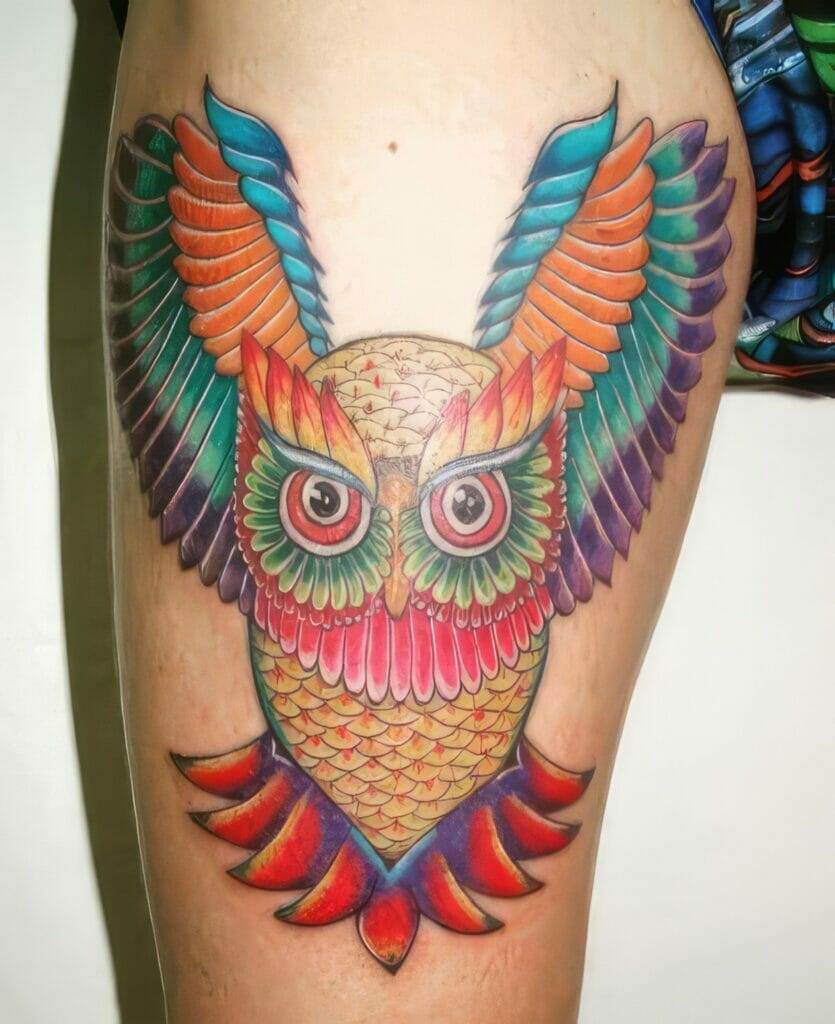
Making a Statement with a Vibrant Watercolor Tattoo
Watercolor tattoos have become increasingly popular in recent years due to their unique and artistic qualities. The fluid and painterly appearance of these tattoos allows for endless possibilities in creating vibrant and dynamic designs. Watercolor ink offers a softer and more delicate look compared to traditional tattoo ink, making it an appealing choice for those who prefer a more subtle and understated tattoo.
When choosing a watercolor tattoo, it’s important to find an experienced artist who specializes in this style. They will have the skills and expertise to create stunning watercolor effects on the skin. It’s also important to consider the placement of your tattoo, as certain body parts may be better suited for watercolor tattoos than others.
Proper aftercare is crucial in ensuring the healing and longevity of your watercolor tattoo. Protecting it from excessive sun exposure, keeping the skin moisturized, and avoiding harsh soaps or exfoliants are all important factors in maintaining the vibrancy of the colors.
Watercolor tattoos offer a unique and artistic way to express your individuality and make a statement. Whether you choose a delicate flower or a vibrant landscape, a watercolor tattoo is sure to turn heads and leave a lasting impression.

